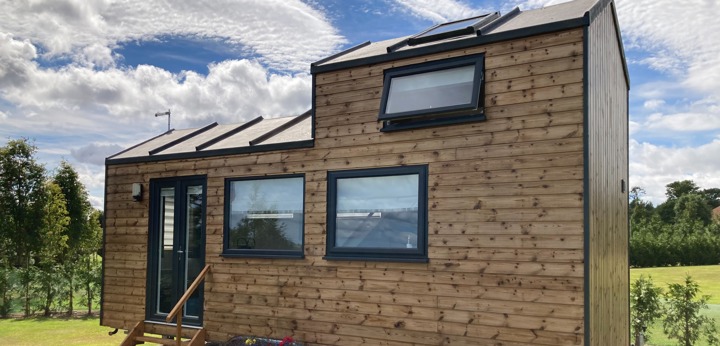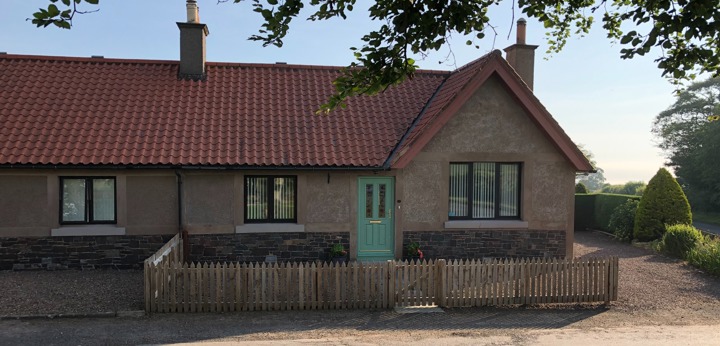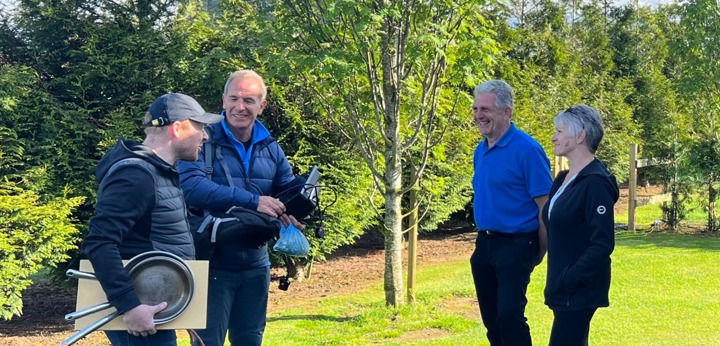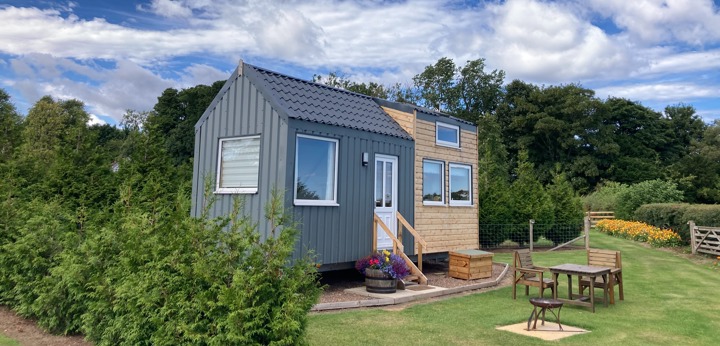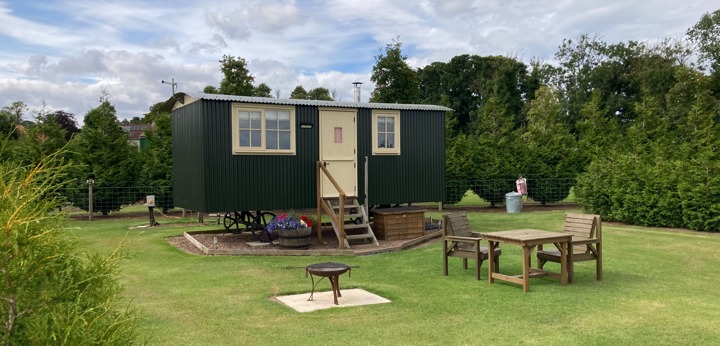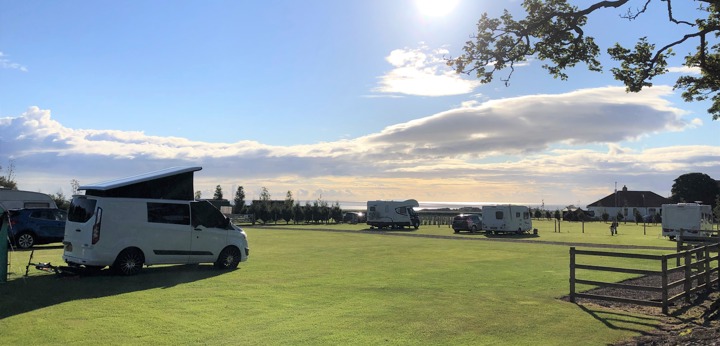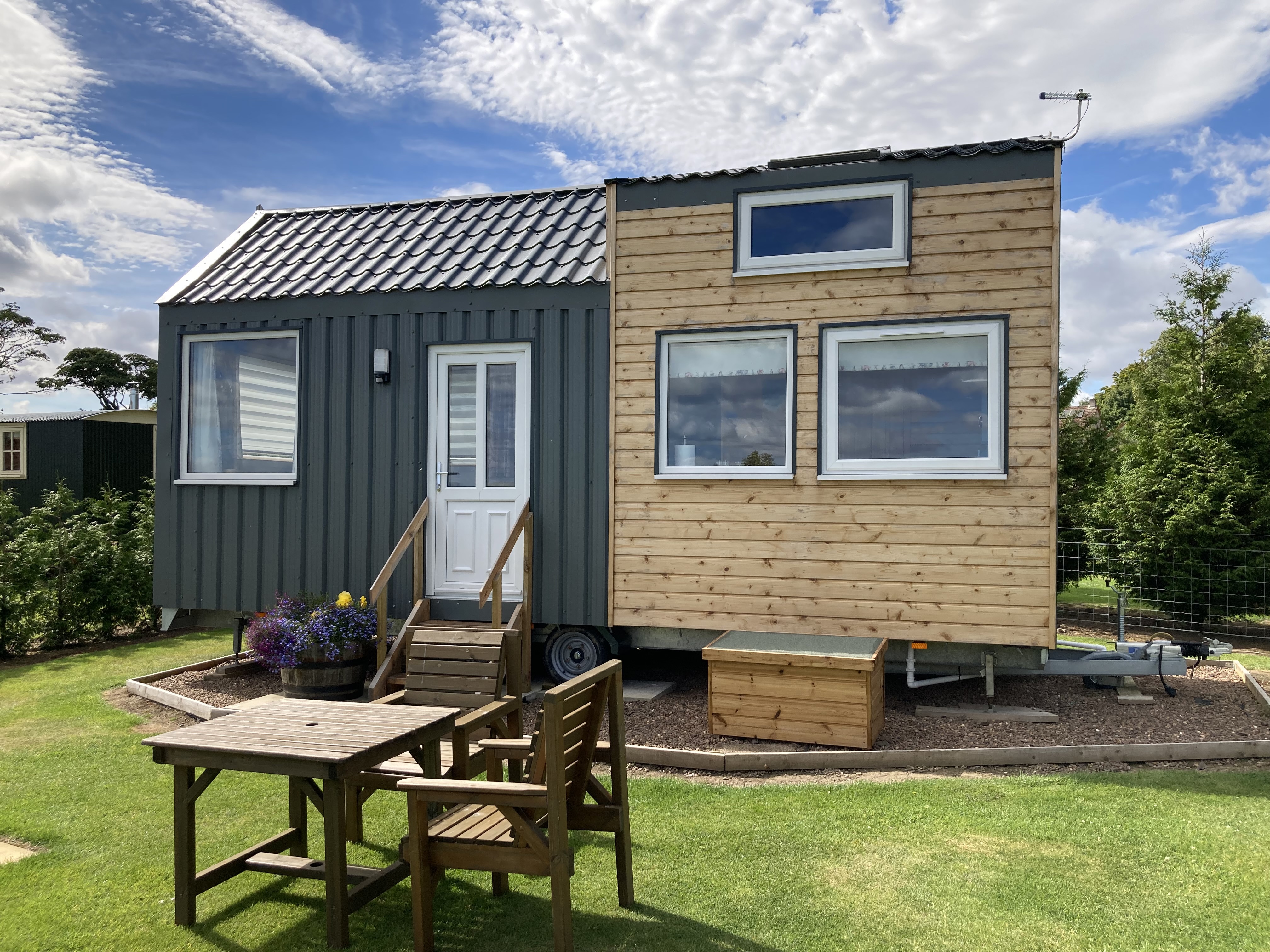
Tiny Houses
Our Tiny Houses were recently featured on Robson Green's Weekend Escapes (Series 2 Episode 7) If you missed it on TV you can watch it on BBC iPlayer
Our Tiny Houses are Adults Only
Our two newest units are Tiny Houses ( The Cedar & The Ashmere) they were designed and built by ourselves and Kenny our local joiner. We have created two unique properties providing luxury accommodation. Both have a full kitchen, living space, toilet/shower room and a mezzanine bedroom with the most fantastic coastal views.

Shepherd's Huts
Our Shepherd’s huts ( The Rown & The Hawthorn) are adults only and combine tradition and luxury they have very luxurious beds with Egyptian cotton bedding and storage underneath. The kitchen areas have a small butler sink with hot and cold running water, a storage cupboard and a two ring hob with grill and oven, full size fridge and a Nespresso coffee machine.
There is a fold down table with two chairs, an electric heater or the option of log burning stove. There is a feeling of calm for people to de-stress chill out and relax.
TV and free Wifi
There is also a table and chairs for dining outside the hut and a firepit/barbecue grill.

Cottage
Templehall Cottage is a beautifully modernised and cosy cottage situated on the beautiful Berwickshire coast with panoramic views over the sea at Coldingham Bay with Large garden and private parking.
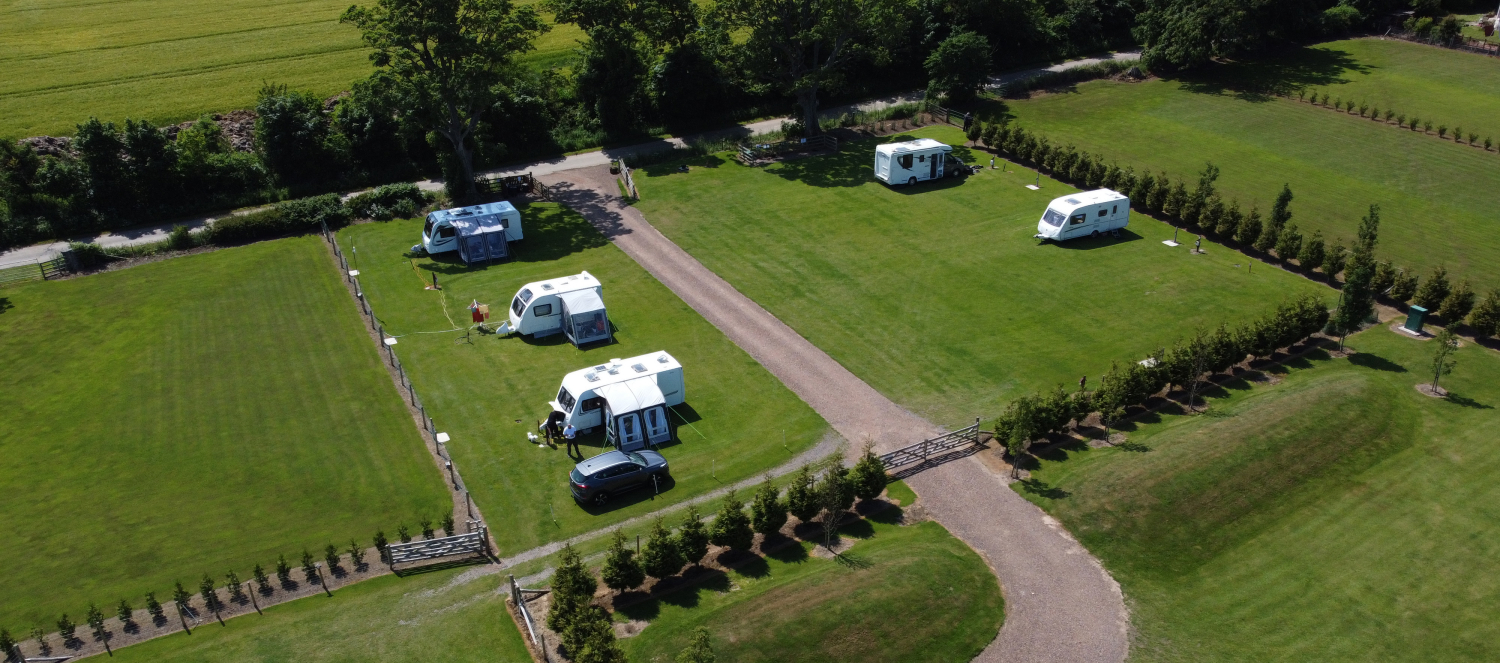
Caravan Site
The caravan park is a small site for 7 caravans or motorhomes which has been established for 26 years and is situated 350m from our cottage. Facilities include electric hook up, fresh mains water, waste disposal point , grey water disposal and free WiFi . We have now installed a water tap and grey water soakaway on all pitches, so all pitches are now fully serviced. We are licensed by the local authority for touring caravans and motorhomes.
What Guests Say
The place was spotless and so beautiful. We loved our stay. Thanks!
Guest from Edinburgh
Very friendly welcoming hosts. Can't fault the Shepards Hut and at a very reasonable price. Would recommend
Guest
Things to See & Do
.jpg?width=640)
Coldringham Village & Beach
This picture postcard village has an unusually ancient history

Berwickshire North Sea Cliffs
The highest and grandest along the east coast of mainland Britain
